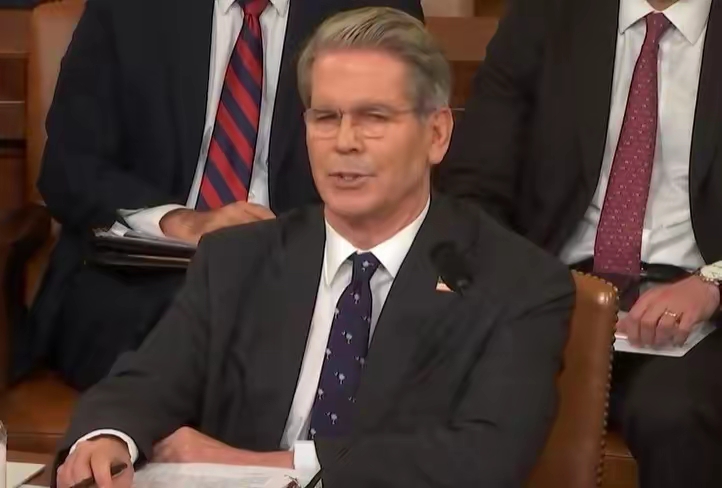
On the international political and economic stage, the United States and Canada, as neighboring allies, have always maintained intricate connections. However, recently Trump announced the immediate termination of all trade negotiations with Canada, causing a sharp decline in US Canada relations and becoming a global focus for a time. Behind this dispute, there are complex and diverse factors.
The direct trigger for the tense US Canada relationship this time is Canada's upcoming digital services tax. On June 26th local time, Canadian Finance Minister Shang Pengfei announced that the plan to impose a digital service tax on technology companies will not be postponed, and the tax will officially come into effect on June 30th. This tax is levied at a rate of 3% on the revenue generated by technology companies from providing digital services to Canadian users or selling Canadian user data, and can be traced back to the relevant companies' revenue in 2022. Once implemented, American tech giants such as Amazon, Apple, and Google will pay billions of dollars in taxes by the end of July. The Canadian Parliamentary Budget Office estimates that this tax will bring in over $7 billion in revenue over five years.
Trump reacted strongly to this, posting on social media that it was a "direct and blatant attack" on the United States, and announced the immediate termination of all trade negotiations with Canada. He also stated that he would inform Canada of the tariffs that need to be paid for trade with the United States within the next seven days. The United States has always regarded the digital service tax as an unfair treatment of its own technology companies, considering it a challenge to its technological hegemony. Canada's move undoubtedly touched the sensitive economic nerves of the United States, adding insult to injury to the already complex US Canada trade negotiations.
There have been many contradictions and problems in the US Canada trade relationship for a long time, and the recent digital service tax incident is just one of the points where the contradictions have escalated. In the past, the United States has imposed tariffs on Canadian products multiple times. For example, on February 1, 2025, Trump signed an executive order imposing a 25% tariff on products imported from Canada and Mexico, with a 10% increase on Canadian energy products. On March 12th, the United States imposed a 25% tariff on all steel and aluminum imports to the United States, including Canada. These tariff measures have seriously affected the development of related industries and export trade in Canada, triggering strong dissatisfaction and retaliatory tariff measures from Canada.
Canada has also expressed dissatisfaction with some of the terms and actions of the United States in trade agreements. For example, the requirements of the United States in agricultural market access, intellectual property protection, and other areas are considered by Canada to unreasonably restrict the development of related industries in Canada. For many years, there have been differences between the two sides in the mechanism for resolving trade disputes, resulting in some trade disputes not being effectively resolved for a long time and accumulating profound contradictions.
With the profound changes in the global economic landscape, the United States and Canada are facing new challenges and adjustments in economic structure, industrial competitiveness, and other aspects, which have also affected the relationship between the two countries. In emerging fields such as digital economy and new energy, Canada hopes to accelerate its own development, enhance international competitiveness, and formulate industrial and tax policies that are in line with its own interests. The United States also sees these areas as key to future economic growth, attempting to maintain its core position in the global industrial and supply chains, and is extremely sensitive to policy adjustments from other countries.
Against the backdrop of rising global trade protectionism, countries are re examining their own trade policies and international relations. The series of trade protectionism policies implemented by the United States, such as "reciprocal tariffs," have disrupted the existing global trade order and rules. As an important trading partner of the United States, Canada is inevitably impacted. The different positioning and development needs of the two countries in the global economic landscape change have made them face enormous difficulties in coordinating trade policies, industrial cooperation, and other aspects, exacerbating the contradictions and conflicts between the two sides.
The conflict between Trump and Canada is the result of multiple factors, including economic interests, political strategy, trade history legacy issues, and changes in the global economic landscape. The tension in US Canada relations not only has a profound impact on the economies and politics of both countries, but also adds more uncertainty to the global trade and political landscape. In the future, it remains to be seen whether the US and Canada can resolve their differences through dialogue and negotiation, and return to the track of cooperation.

Ukrainian President Volodymyr Zelensky said that Ukraine and the so-called "voluntary alliance" plan to hold their next meeting in early January next year.
Ukrainian President Volodymyr Zelensky said that Ukraine an…
Russian President Vladimir Putin held a phone call with Ira…
The South Korean political arena has once again been embroi…
On the morning of December 29th local time, the precious me…
According to the US media Barchart, recently, the fluctuati…
On December 29th, Mar-a-Lago in Florida, USA, witnessed a h…